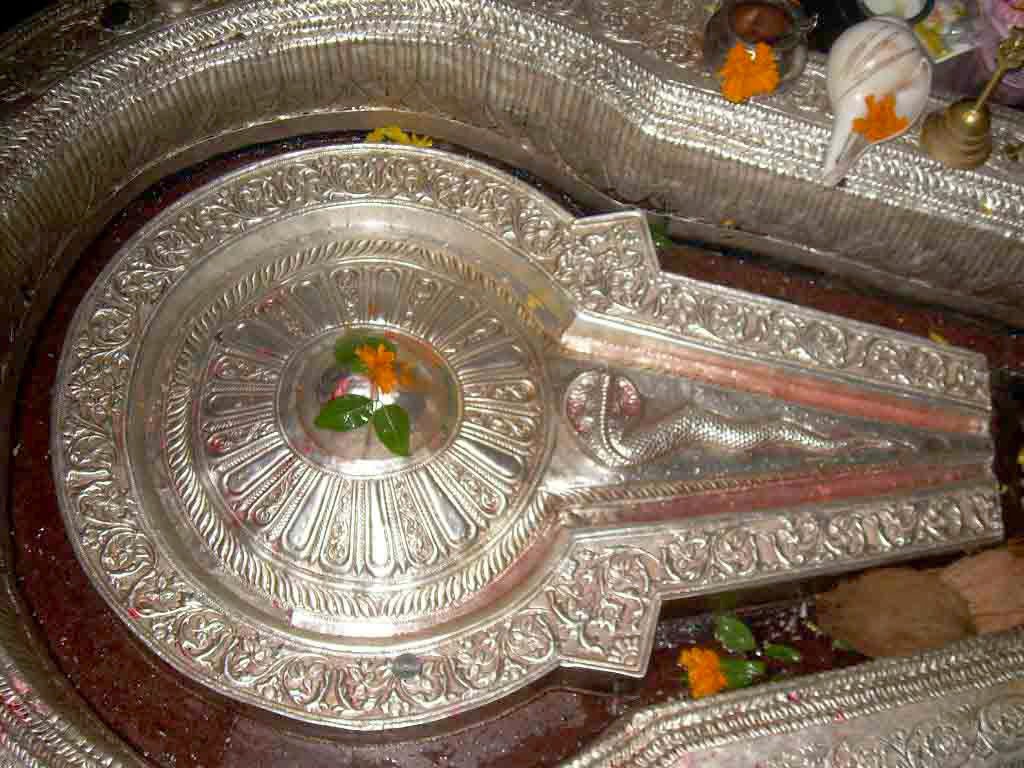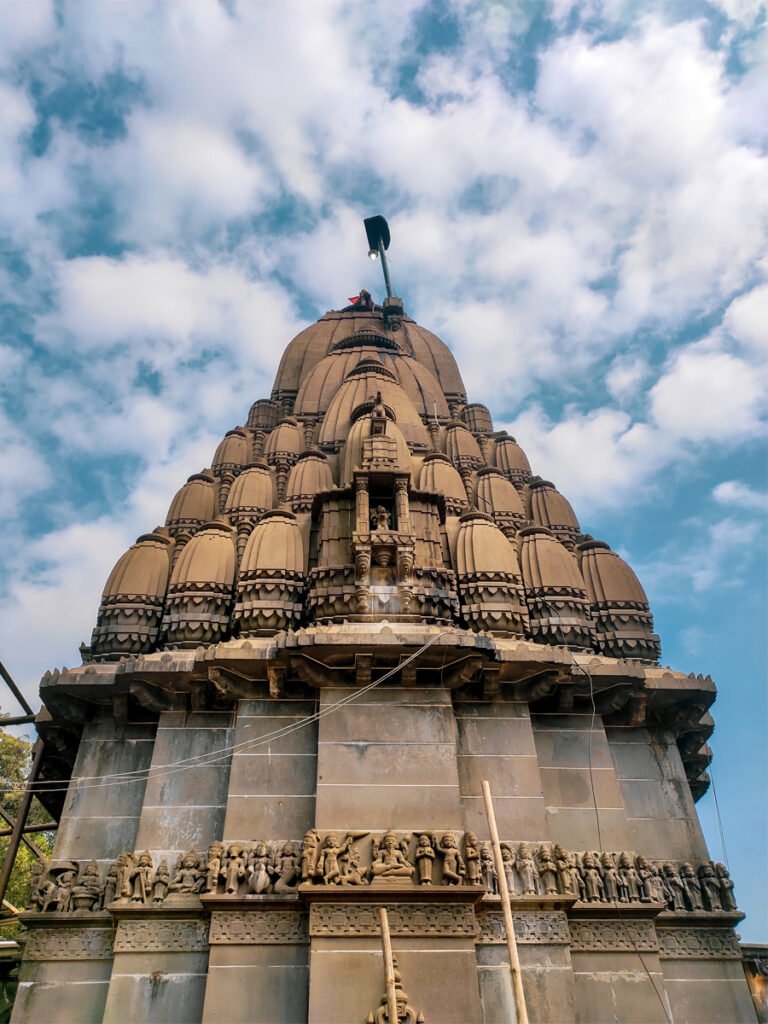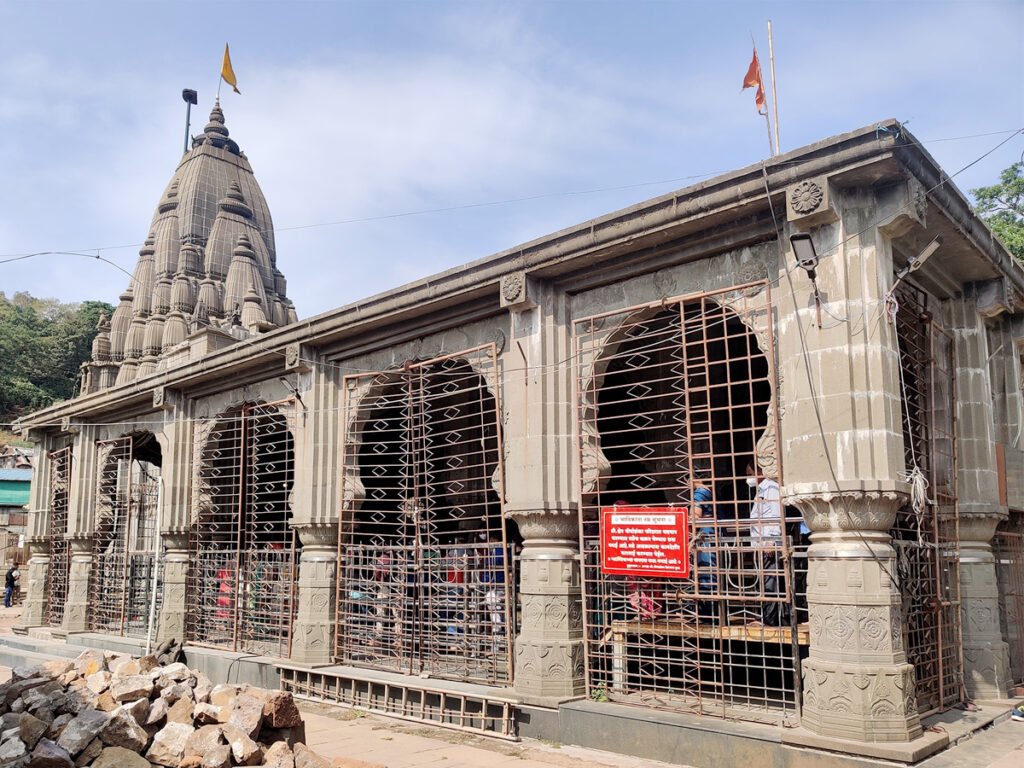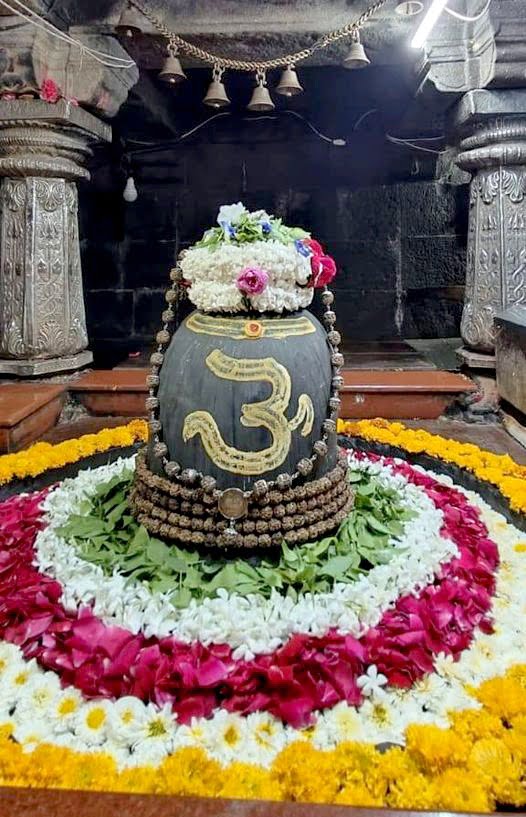Bhimashankar Temple: 6th Jyotirlinga – Lions Seek Blessings
Bhimashankar Temple is one of the ancient Jyotirlinga dating back to the 13th century. It is situated in the village Bhorgi, Sahayadri hills (ghat region) near Pune (125 km.), Maharashtra. It is the source of river Bhima also known as Chandraghaga.

Contents
- 1 Miracle:
- 2 Legend of Bhimashankar Temple:
- 3 Architecture of Bhimashankar Temple:
- 4 Bhimashankar Temple Timing and Rituals:
- 4.0.1 Timing:
- 4.0.2 Rituals:
- 4.0.3 Nageshwar Jyotirlinga Dwaraka: 7th CE Temple with Divine Powers
- 4.0.4 Grishneshwar Temple: Wealth and Pleasure at Shiva’s Feet
- 4.0.5 Kedarnath Temple: One of Jyotirling & Char Dham
- 4.0.6 Trimbakeshwar Jyotirlinga Temple
- 4.0.7 Sacred Kashi Vishwanath Temple: 11th Jyotirling of Liberation
- 4.0.8 Aundha Nagnath Temple: 8th Jyothirling with Divine Serpents
- 5 Places to visit near Bhimashankar Temple:
- 6 How to reach Bhimashankar Temple:
Miracle:
You find many wild lives in the forest area and are known for lions. There are also innumerable medicinal herbs. It is said that lions from the forests come to the shrine every night and take the Lord’s blessings.
Legend of Bhimashankar Temple:
There is a legend that there was a demon known as Tripurasura who performed a penance of meditation to appease Lord Shiva and acquire a boon of immortality. Please with his worship the Lord granted him the boon to attain immortality provided he used his powers for the welfare of people. As time lapsed he forgot the condition and started showing his nature and began harassing people, saints, hell, heaven, and other worlds.
To impede him, Lord Shiva took the form of “Rudravatar”, Tripurasura feared to see the form of a hunk, so there was a Faeroes battle and lord Rudra killed the demon. Tired of the battle, there were streams of sweat coming out of the body and the collection of sweat turned out as a pond and was called Bhima. Devotees pledged Lord Bhimashankar to reside here forever and bless them.
Read More>> Mahakaleshwar Jyotirlinga: Powerful Mahakal Temple in Ujjain
Architecture of Bhimashankar Temple:
The style is Hemadpanthi in which Nagara is marked by sculptures of a tall shikhara, or tower, with carvings. The structure appears new because this temple has been modified several times from the past by various rulers. According to past literature, this temple has been referred since 13th century.
The shikhara is crowned by a golden kalasha, or finial, representing the abode of Lord Shiva. Within its precinct, there are various other small shrines dedicated to other Hindu deities like Parvati, Ganesha, and Kartikeya. The sanctum sanctorum of the temple can be found in the middle of the temple complex where the Jyotirlinga is enshrined. The Jyotirlinga, as such, is a naturally formed lingam, or phallic symbol; it is worshipped as Lord Shiva himself.
The entrance to the temple is through a huge gopuram or gateway. The gopuram is so replete with carvings of the deities of Hinduism and mythological scenes. The temple complex also has a mandapam, that is, hall, where pilgrims can congregate and pray.
Being a very renowned military commander, Chimaji Appa freed the west coast from the clutches of Portuguese rulers collected two unique Roman style bells. He presented one of them to the temple and placed it in front of the temple.
A big fete is performed on Maha Shivaratri and on regular days, you find Rudrabhishek and Panchamrit snan. As we all know that Lord Shiva likes Abhisheka
Read More>> Tirumala Tirupati Venkateswara Swamy

Bhimashankar Temple Timing and Rituals:
Timing:
The Bhimashankar Temple is open from 4:30 AM in the morning to 9:30 PM in the evening .
Rituals:
It performs several pujas and rituals daily. Some of them are as follows:
Mangala Aarti: It is the first puja of the day, which enables devotees to make offerings and lamp to Lord Shiva.
Abhisheka: The puja offers holy bath to the Jyotirlinga by various sacred offerings like milk, panchamrita (mixture of five nectars), curd, etc.
Shringar: The Jyotilinga is decorated with attractive flowers and ornaments.
Aarti: This is a daily aarti that is performed at specific times by waving ghee lamps or camphor before deities.
Rudrabhishek: It is a detailed puja to invoke Lord Shiva. This involves the chanting of mantras and provides puja material. Mondays and Pradosham days are considered more prominent days for conducting Rudrabhishek.
Special pujas:
Apart from these important festivals, special pujas are also performed on other occasions of the year. The most important ones among them are
Shivaratri: Mahashivratri is one of the important festivals that is celebrated here. The poojas are special during this time, also the decorations and night-long vigils.
The entire Shravan month is considered particularly sacred to the devotees of Lord Shiva. Special pujas and abhishekh rituals are performed throughout the month.
Kartik Poornima: He was the day when Lord Shiva as Ardhanarishwara killed the demon Tripurasura.
Places to visit near Bhimashankar Temple:
Located within the Bhimashankar Wildlife Sanctuary featuring various types of flora and fauna. you can visit for nature walks to see the natural beauty of this sanctuary.
Gupt Bhimashankar
Near the main Bhimashankar Temple, it is a cave temple on a smaller scale, and you go there to contemplate in peace, same Lord Shiva viewed under a different angle.
Hanuman Lake: This photogenic lake is not very far from the temple, offers peaceful surroundings, and can carry you away. Ample space is there for holding a quiet picnic and observing the beauty around.
Nagphani (Nagphad) Point: It is a nearby hill from where one can have an all-embracing panoramic view of the landscape. Fond of Nature? one can start Trekking from this point.
Shirdi: Baba town shirdi is about 150 km from Bhimashankar Jyotirling, Many pilgrims visit both the Bhimashankar and Shirdi places as they walk their faith.
Malshej Ghat: The road travel distance between Malshej Ghat to Bhimashankar is about 80 km. Except for the sight of some species of birds, this place gives the most sincere expression of beauty in nature. It is the season when people love to travel in wet conditions.
Ahupe Waterfall: It is near Khed and 15 km from Bhimashankar. It makes a perfect destination to visit during the wet season.
Ozar and Lenyadri: They are two of the major centers of pilgrimage for the devotees of Lord Vighnaharta-Ganesha. Ozar is famous for the Vigneshwara Temple, and Lenyadri is famous for the Girijatmaj Temple, dedicated to Lord Ganesha. They are two to three hours by road from Bhimashankar.
Bhimashankar is a pilgrim place to the Jyotirlinga, so you can also glance at the other Jyotirlingas like Grishneshwar Temple and Trimbakeshwar Temple, which is also not far.
Kamshet and Lonavala: Hill stations near Bhimashankar; lush greenery, serene lakes, and gentle climate.

How to reach Bhimashankar Temple:
By Road:
From Pune: approx. 110 km.
From Mumbai: approx. 210 Kms.
By Train:
The nearest railway station: Pune Railway Station.
By Air:
The nearest airport: Pune Airport.






